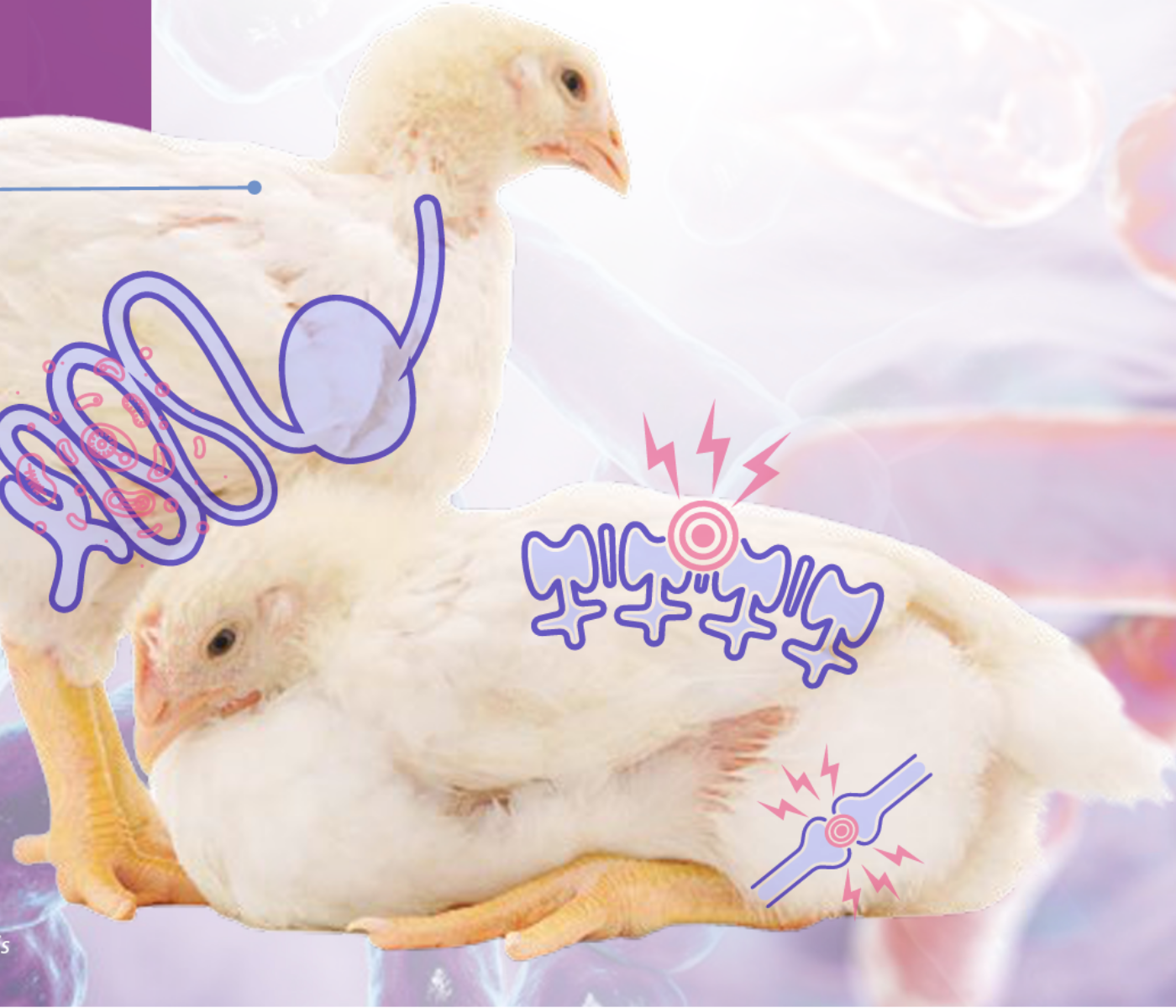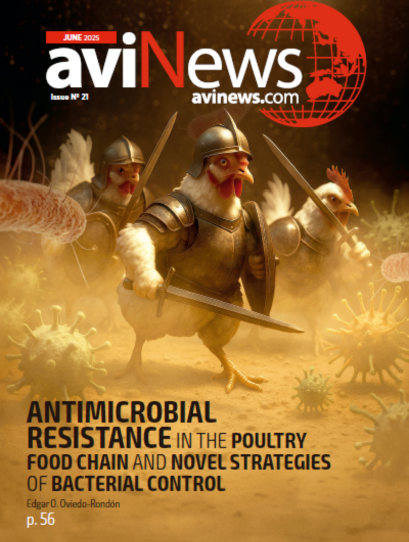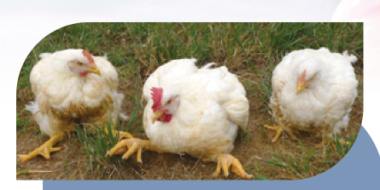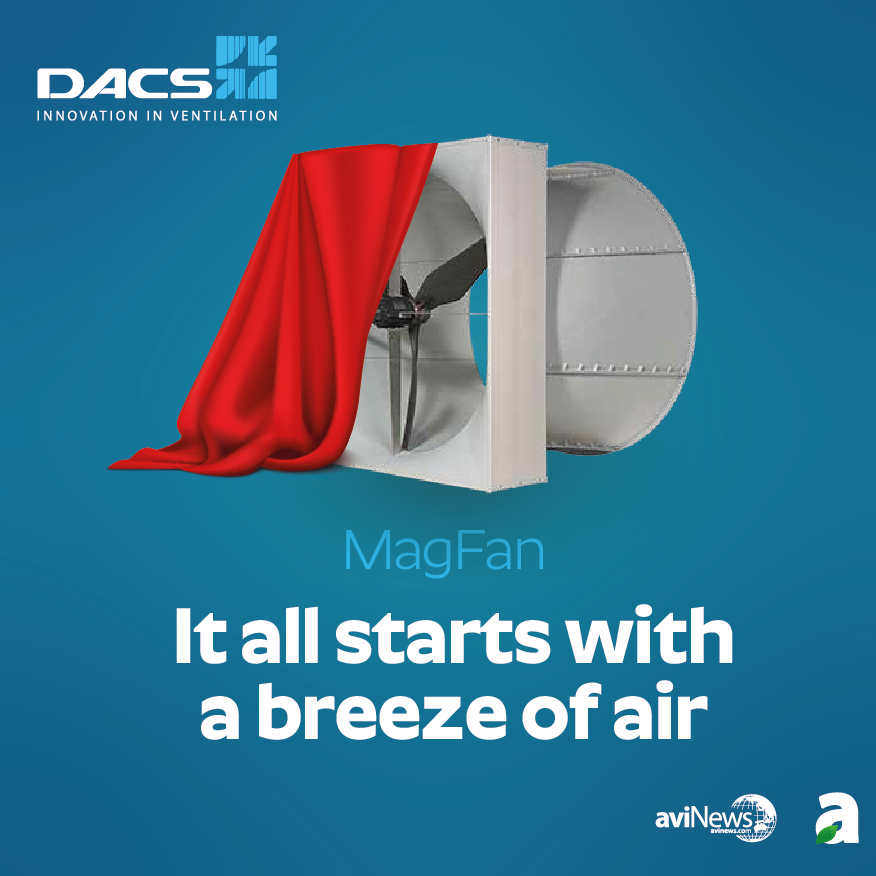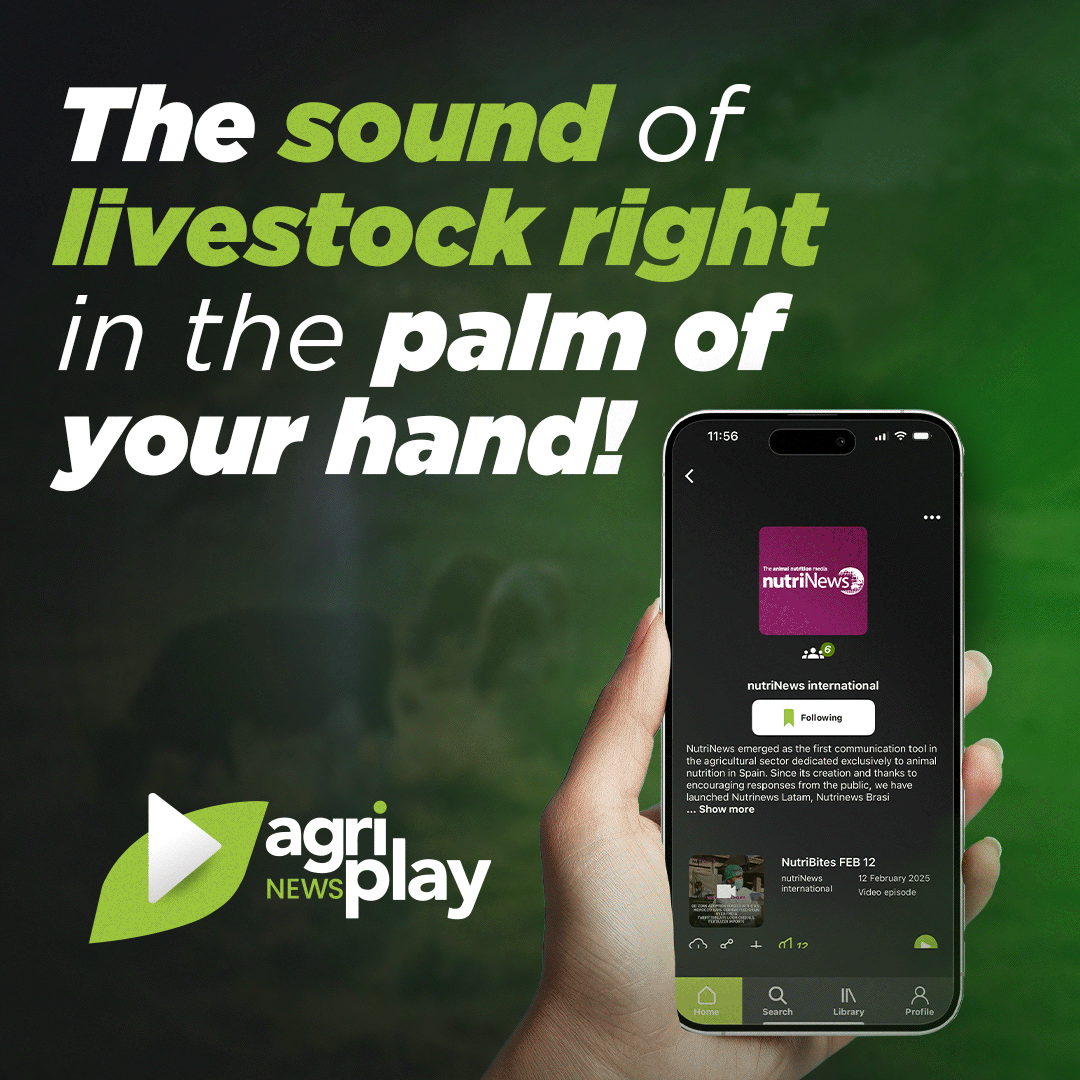Content available at: Español (Spanish)
Enterococcal spondylitis: This is a concerning disease. It is necessary to know more about the initiation of the infection and pathogenicity control methods to prevent future outbreaks.

Vertebral osteomyelitis or “kinky back” ranked among the top ten broilers diseases in countries like the USA and Brazil and has been reported in many other countries worlwide.
While many bacteria can cause vertebral infections in individual birds, Enterococcus cecorum causes outbreaks affecting whole flocks.
- E. cecorum is a gram-positive bacterium, which is facultative anaerobic and non-spore-former.
- This coccus was known only as an enteric commensal of poultry.
- The Commensal strains of E. cecorum can be detectable in the gut of chickens during the third week of life and become dominant in broilers’ intestinal microbiome.
Figure 1. Clinical presentationPathogenic strains of E. cecorum have been identified as a major cause of lameness and mortality in broiler and broiler breeder flocks. In addition, this bacterium causes septic disease in Pekin ducklings and racing pigeons.
The most common disease presentation in broilers and broiler breeders is vertebral osteoarthritis, kinky back, or more technically, Enterococcal spondylitis (ES).
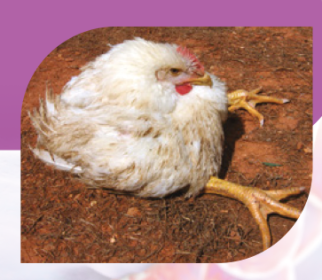
Figure 2. Clinical presentation
In this clinical presentation, the affected chickens display a typical hock “sitting” position. A similar clinical presentation is seen in a developmental abnormality of the spinal column known as spondylolisthesis which causes compression of the spinal cord.
However, in outbreaks of ES, between 5 to 15% of flocks will show signs of infection, which differentiates them from the spinal column’s developmental malformation, where rare individual birds are affected.
It is important to indicate that more than one Enterococcus species and other microorganisms have also been detected in these vertebral lesions in various studies conducted in other countries.
Enterococcus faecalis, Enterococcus hirae, Escherichia coli, and Staphylococcus aureus have been isolated. Several authors
Keep up to date with our newsletters
Receive the magazine for free in digital version REGISTRATION ACCESS
YOUR ACCOUNT LOGIN Lost your password?

